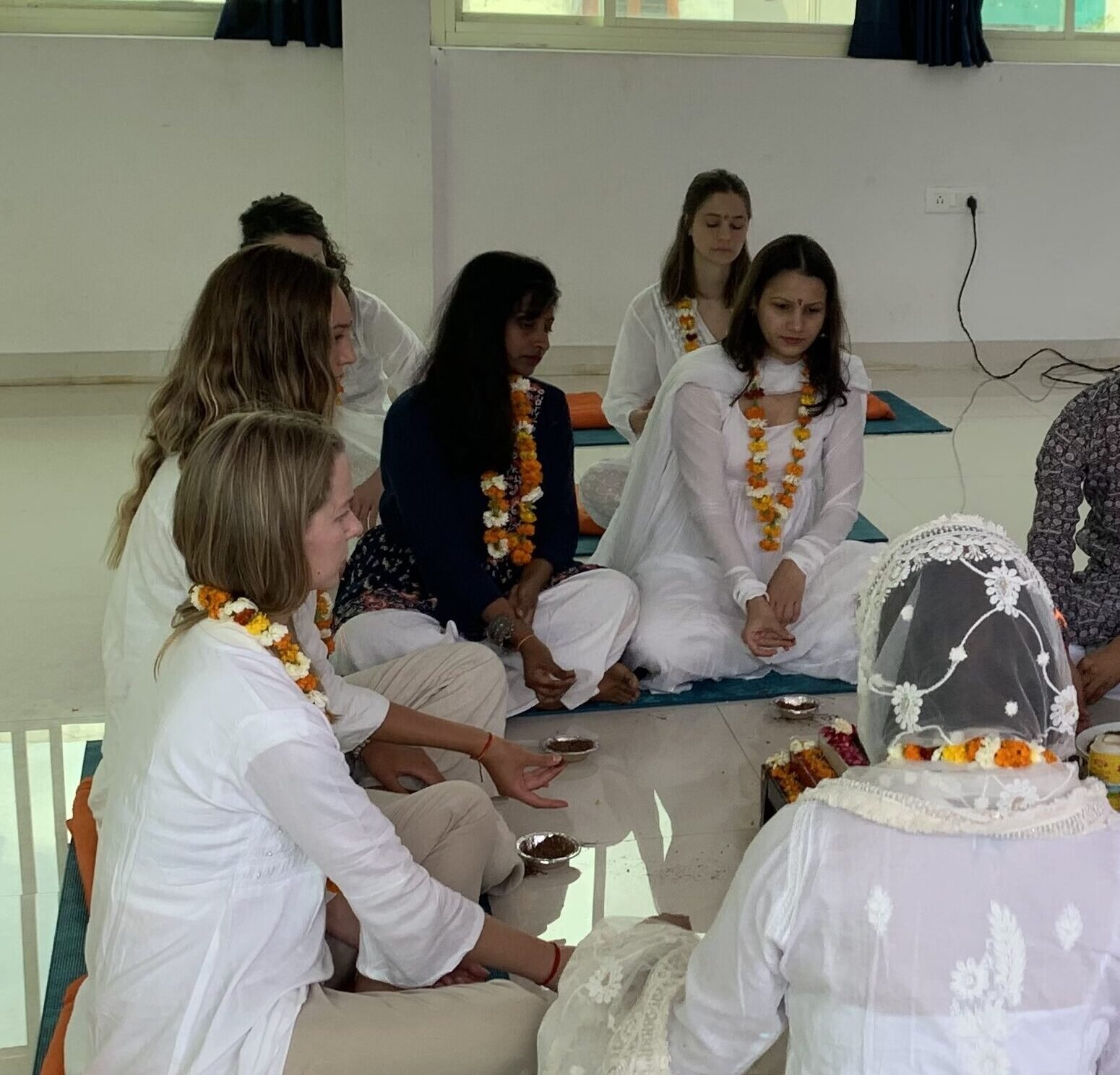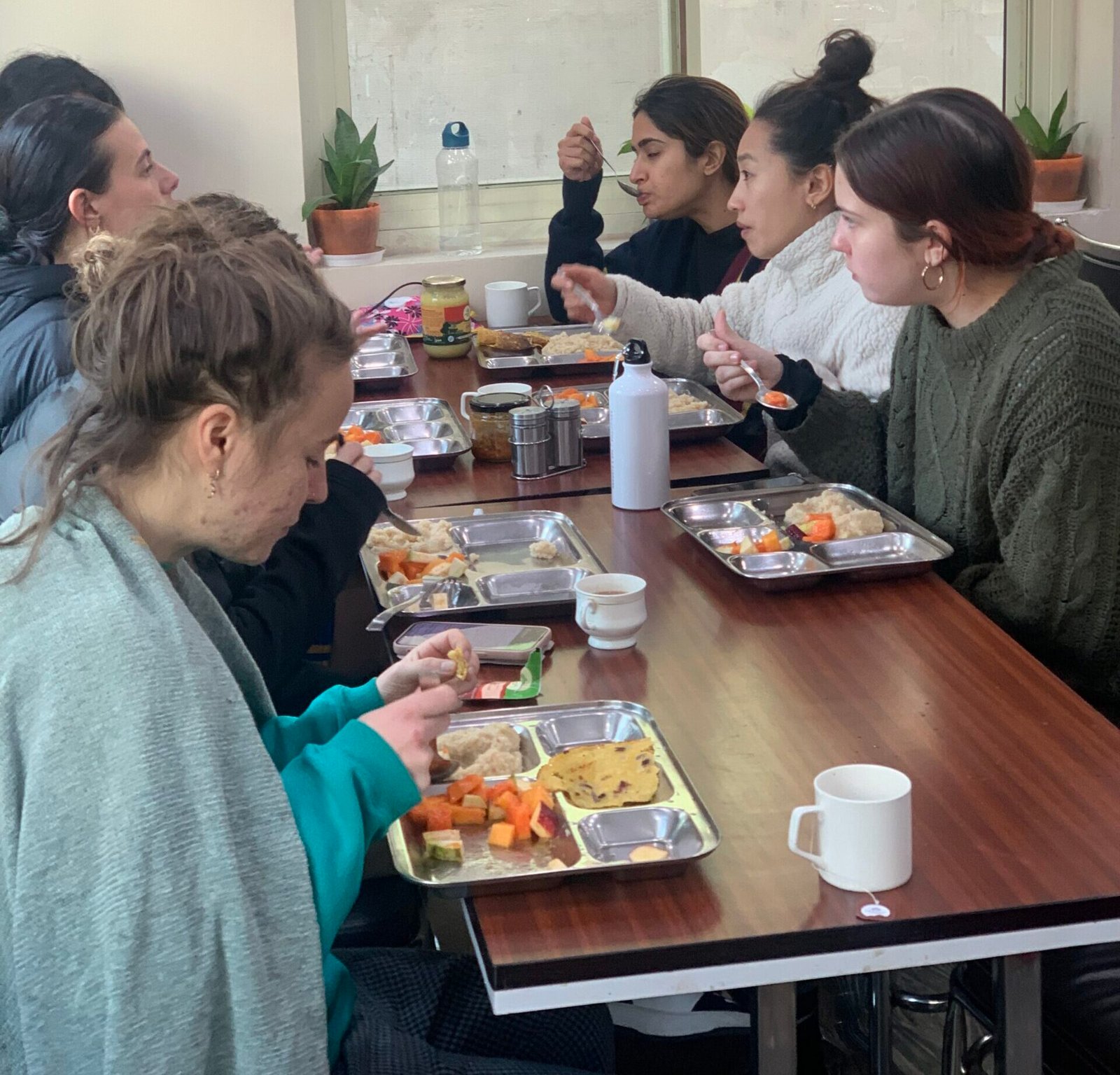200-Hr Yoga Teacher Training Course
Refresh | Revive | Rejuvenate

Welcome to The Best Yoga teacher training school in Rishikesh, India.
Rishikesh Vinyasa Yogashram, a Yoga Alliance-certified school in Rishikesh, India, is one of the ‘Best yoga teacher training schools’ in Rishikesh, India, and offers exceptional yoga teacher training programs. Our 200-Hour Yoga Teacher Training in Rishikesh
provides advanced techniques and in-depth instruction to elevate your practice and teaching skills, helping you become a skilled and confident yoga teacher. Our training programs emphasize the holistic benefits of yoga, addressing physical, mental, and spiritual well-being. Participants will benefit from expert instruction, personal growth opportunities, and a supportive community of fellow yogis. You will also have the chance to enjoy local excursions, learn about yogic nutrition, and experience the peaceful ambiance of the Himalayas.
Join us at Rishikesh Vinyasa Yogashram to deepen your yoga practice, meet like-minded individuals, and rejuvenate your spirit in one of the most beautiful and harmonic places of the Himalayas range.
Overview About 200-Hr Teacher Training Course
The Vinyasa Yogashram Rishikesh offers a comprehensive exploration of traditional Hatha, Ashtanga, and Vinyasa flow yoga. Participants gain in-depth knowledge of anatomy, physiology, and yogic philosophy, fostering physical strength, flexibility, mental clarity, and balance. The course uniquely integrates modern anatomical insights with traditional yoga practices. It includes detailed instruction on yogic diet, asanas, pranayama techniques, and mudras for a holistic experience. Students deepen their understanding of their practice and philosophy, enhancing their skills as teachers. The program covers posture adjustments, class sequencing, teaching different levels, and working with diverse body types. Additionally, participants are introduced to essential concepts such as karma yoga, chakra healing, and meditation. Upon successful completion, students receive a certificate from Rishikesh Vinyasa Yogashram, globally recognized by Yoga Alliance, USA, validating their training and expertise.
“कर्मण्यकर्म य: पश्येदकर्मणि च कर्म य: | स बुद्धिमान्मनुष्येषु स युक्त: कृत्स्नकर्मकृत् ||”
“Karmanye karma yaḥ pasyed karmani cha karma yaḥ | Sa buddhiman manusyesu sa yuktah krtsna karma-krit. ||”
Translation: Those who see action in inaction and inaction in action are truly wise amongst humans. Although performing all kinds of actions, they are yogis and masters of all their actions.
Why we Rishikesh’s leading school for the 200-hour teacher training?
Choosing Rishikesh Vinyasa Yogashram for 200-Hour Yoga Teacher Training in Rishikesh offers an immersive experience in yoga’s physical, mental, and spiritual aspects. The serene environment of Rishikesh enhances your practice, while expert instructors provide valuable guidance. This comprehensive program leads to Yoga Alliance certification, opening international teaching opportunities. You’ll also benefit from a supportive community, personal transformation, and cultural enrichment, making it an ideal setting for deepening your practice and developing as a well-rounded yoga teacher.
If you passionate about yoga and want to make it a career or deepen your practice? Our 200-hour YTT is a month-long course that includes both theory and practice. It covers important topics like Anatomy, Yoga Philosophy, Asanas, Pranayama, and Meditation. This program will deepen your yoga knowledge, both physically and spiritually, and prepare you to be a skilled yoga teacher.
What you will Learn During this course:
Opting for the Rishikesh Vinyasa Yogashram 200-hour YTT course in Rishikesh ensure a comprehensive, fulfilling, and life-changing experience in yoga. It equips you with the skills needed for a successful teaching career while also fostering significant personal development. The 200-hour Yoga Teacher Training Course at Rishikesh Vinyasa Yogashram adheres to Yoga Alliance standards, featuring 7 to 8 hours of daily intensive practice and theory. Covering asanas, pranayama, meditation, and philosophy, this rigorous program offers a profound and transformative experience, enhancing both personal and professional skills.
Become A Certified Yoga Teacher
Daily Schedule during 200-Hr Teacher training course

1st half
- 05:00 AM Morning Bell
- 06:30 – 07:30 AM Shatkarma & Pranayama
- 07:30 – 09:00 AM Traditional Hatha Yoga
- 09:00 – 10:00 AM Breakfast
- 10:15 – 11:00 AM Yoga Anatomy
- 11:00 – 12:00 PM Yoga Alignment/Adjustment
- 12:15 –01:00 PM Mantra Chanting
2nd Half
- 01:00 – 02:00 PM Lunch
- 03:00 – 04:00 PM Yoga Philosophy
- 04:00 – 05:30 PM Ashtanga yoga/Vinyasa flow
- 05:45 – 06:45 PM Meditation
- 07:15 – 08:15 PM Dinner
- 10:00 PM Lights off
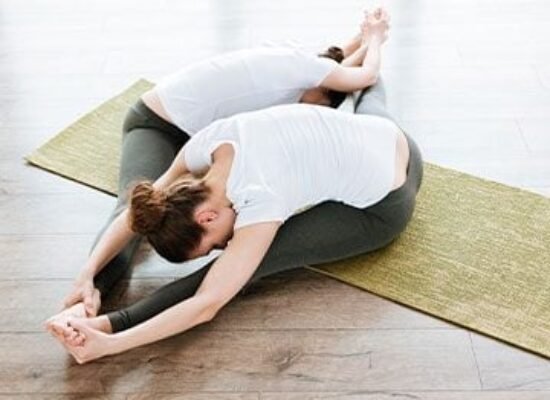
Upcoming Dates:


What’s Includes during course:
This teacher training course includes daily practice and teaching methodology, providing holistic tools for personal and professional growth.
Amenities and Facility:
We understand the diverse needs of our students and offer a comfortable, solo traveler, and female-friendly environment.
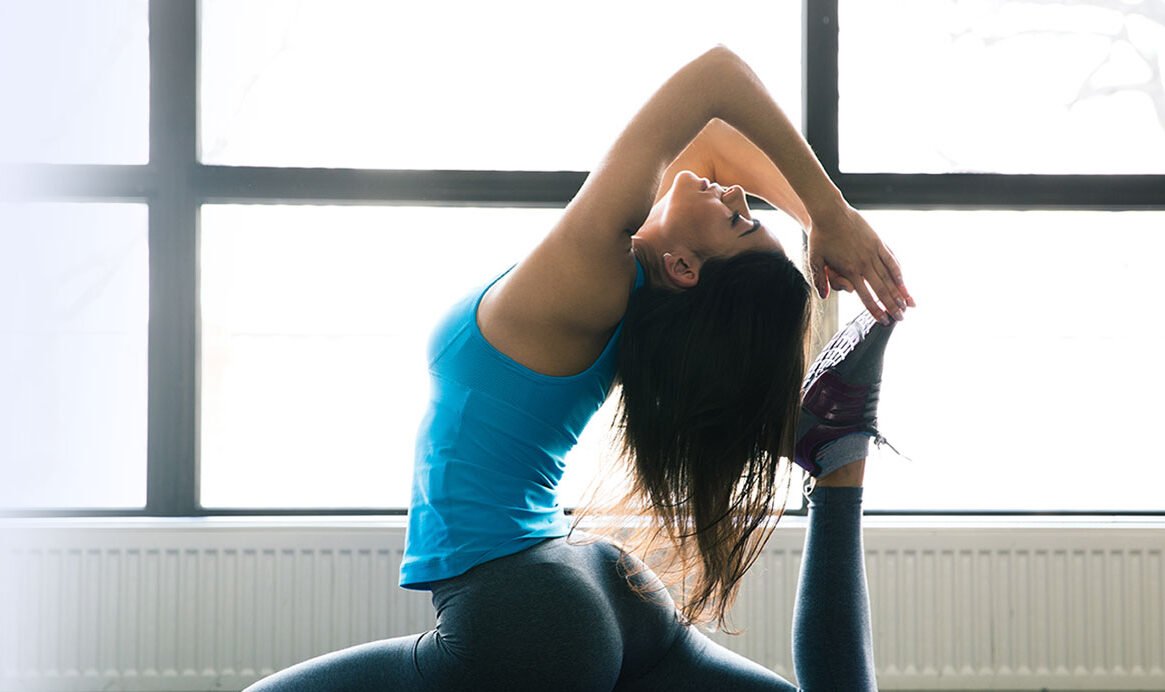
Our Teachers
Our yoga teachers are passionate, experienced professionals dedicated to guiding students through mindful practices. They foster an environment of growth, balance, and inner peace for every participant.
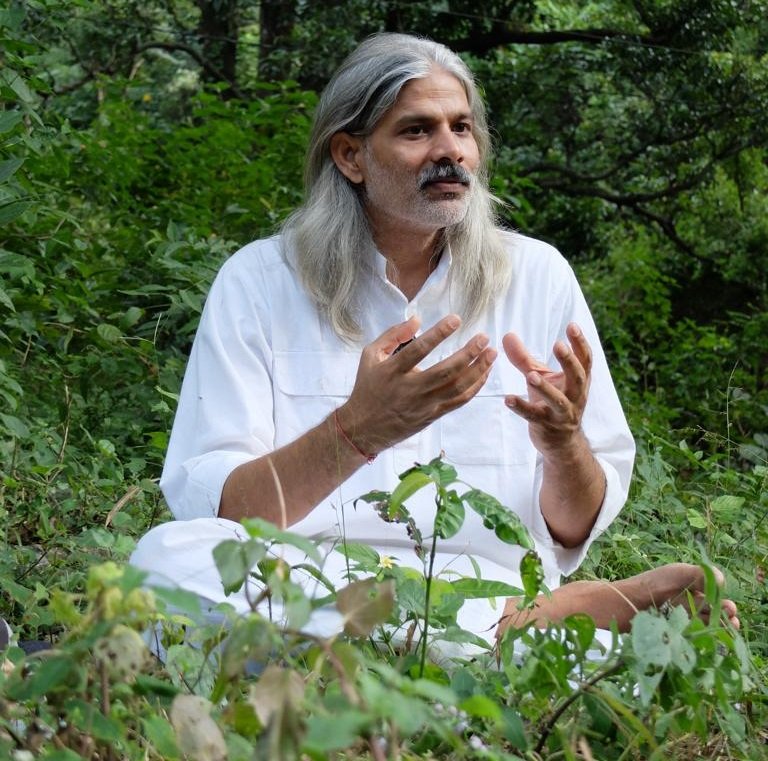
Rohit Ji
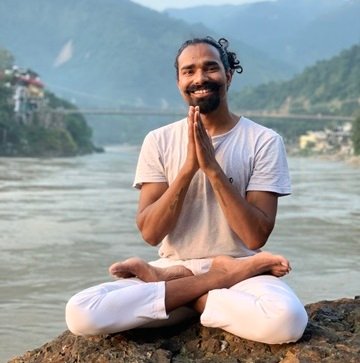
Satya Ji

Manisha Ji

Sushant Ji
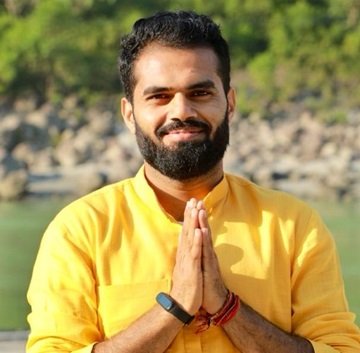
Deepak Ji

Yogi Mann Ji
FAQs
Insights of Bhagwad Gita for Yogic Life
Philosophical Foundation
- Understanding Yoga’s Purpose: The Gita explains the purpose of Yoga as a means to attain self-realization and union with the divine. It clarifies different paths of Yoga (Karma Yoga, Bhakti Yoga, and Jnana Yoga) and their respective roles in achieving spiritual enlightenment.
- Concept of Dharma: It elucidates the concept of dharma (duty) and how performing one’s duty selflessly is a path to spiritual growth.
Mental Discipline
- Mind Control: The Gita teaches techniques for controlling the mind and senses, emphasizing the importance of mental discipline in achieving inner peace and stability.
- Equanimity: It stresses maintaining equanimity in success and failure, pleasure and pain, which is crucial for a yogi’s mental and emotional balance.
Ethical Living
-
Code of Conduct: It outlines ethical and moral principles that should guide a yogi’s behavior, ensuring that their actions are in harmony with spiritual values.
Spiritual Fulfillment
- Union with the Divine: It explains the ultimate goal of Yoga as achieving union with the divine, and how devotion, knowledge, and selfless action contribute to this union.
Guidance on Practice
- Karma Yoga (Path of Selfless Action): The Gita advises performing one’s duties without attachment to results, teaching the yogi to focus on action and surrender the outcomes to the divine.
- Bhakti Yoga (Path of Devotion): It underscores the importance of devotion and surrender to God, illustrating how a yogi can achieve spiritual fulfillment through love and devotion.
- Jnana Yoga (Path of Knowledge): It provides insights into the nature of the self, the eternal soul, and the material world, helping a yogi attain wisdom and liberation through knowledge.
Spiritual Growth
- Self-Realization: It guides a yogi in understanding their true nature beyond the physical body and mind, leading to self-realization and enlightenment.
- Inner Peace: The teachings encourage the yogi to seek inner peace and stability, independent of external circumstances.
Dealing with Challenges
- Handling Adversity: The Gita offers wisdom on facing challenges and adversities with a calm and composed mindset, which is essential for a yogi’s journey.
Practical Advice
- Daily Practice: It provides practical advice on daily spiritual practices, including meditation, self-discipline, and devotion, which are integral to a yogi’s routine.


















